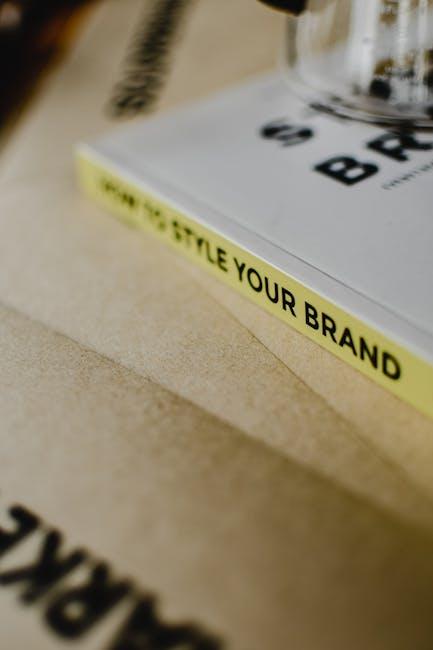Designing Title Sequences That Set the Tone for Stories
In the world of filmmaking, television, and digital storytelling, the title sequence is often the first impression viewers have of a story. A well-crafted title sequence does more than just introduce the show’s name – it sets the emotional and thematic tone that guides the audience throughout the narrative. Designing title sequences that set the tone for stories is an art that requires creativity, technical skill, and a deep understanding of the story’s core essence. In this article, we explore what makes a title sequence stand out, practical tips for design, benefits, and inspiring case studies that demonstrate the power of an impactful opening.
Why Title Sequences Matter in Storytelling
Title sequences are far more than mere introductions. They act as a bridge between the viewer’s reality and the universe of the story. Let’s break down why title design is crucial:
- Sets the mood: Colors, typography, and music combine to evoke specific emotions from the outset.
- Foreshadows themes: Symbolism and visual motifs hint at what’s to come.
- Builds anticipation: Engaging animations or storytelling hooks create excitement that propels viewers forward.
- Reinforces branding: A distinctive title sequence makes a project memorable and instantly recognizable.
Key Elements in Designing Title Sequences That Set the Tone
To design an impactful title sequence, consider integrating these essential components that naturally draw viewers into the story world:
- Typography Choice: The font style should reflect the genre and mood, whether it’s playful, mysterious, bold, or elegant.
- Color Palette: Colors evoke feelings and can signal tone – dark palettes for thrillers, vibrant hues for comedies.
- Music and Sound Design: Audio is powerful in immersing viewers; matching the music to the narrative pace is key.
- Animated Visuals: Movement adds dynamic energy; use motion graphics to foreshadow plot or create atmosphere.
- Symbolism and Imagery: Subtle or striking images embedded in the title can hint at plot elements or character arcs.
Benefits of a Well-Designed Title Sequence
Investing time and creativity into title sequences offers multiple advantages for content creators and audiences alike. Here are some notable benefits:
| Benefit | Description |
|---|---|
| Audience Engagement | Captures viewer attention immediately, making them eager to watch further. |
| Story Depth | Enhances narrative layers by giving symbolic or thematic cues upfront. |
| Brand Identity | Creates a recognizable style consistent across episodes or related projects. |
| Professionalism | Signals high production values, adding credibility and trust. |
| Emotional Impact | Evokes feelings tied tightly to the story’s core, increasing viewer investment. |
Practical Tips for Designing Effective Title Sequences
Whether you’re a filmmaker, motion graphic designer, or content creator, implementing these strategies can elevate your title sequences:
- Research Your Story’s Genre and Mood: Tailor every design choice to match the emotional landscape and themes of your story.
- Keep It Concise: Title sequences shouldn’t drag on. Aim for 15-30 seconds to maintain momentum and avoid viewer impatience.
- Use Visual Metaphors: Incorporate symbolic imagery that hints at storyline elements without giving spoilers.
- Integrate Seamlessly with the Score: Collaborate closely with composers or sound designers to match visuals with music dynamics.
- Experiment with Typography Animation: Moving text, kinetic typography, or morphing fonts can communicate mood and tone creatively.
- Test Across Devices: Check your title sequence’s clarity and impact on different screen sizes and resolutions for optimal user experience.
Case Studies: Iconic Title Sequences Setting the Tone Perfectly
Looking at real-world examples reveals how top creators skillfully apply design principles to set story tone through title sequences:
| Title | Design Highlights | Tonal Effect |
|---|---|---|
| True Detective (Season 1) | Double exposure imagery blending landscapes and faces, slow haunting music | Sets suspenseful, eerie mood fitting the dark crime narrative |
| Stranger Things | Retro typography and neon glow, synthwave soundtrack | Evokes 80s nostalgia and mysterious supernatural vibes |
| Mad Men | Falling silhouette over a metropolitan skyline, jazzy tune | Communicates mid-century modern mood mixed with existential crisis |
| Game of Thrones | Intricate 3D map animation of kingdoms, epic orchestral score | Conveys epic scale and complex political worldbuilding |
Firsthand Experience: Crafting a Title Sequence That Resonates
From my experience as a content creator designing title sequences, the most rewarding projects are those where the sequence feels like a story’s heartbeat. For instance, on a recent thriller short film, we used limited color palettes-muted grays punctuated by red accents-to foreshadow danger and emphasize key plot points. The title typography subtly morphed into barbed wire animation, visually representing entrapment-a theme central to the story. This integration helped audiences immediately immerse themselves, enhancing overall reception and engagement.
Conclusion: Bringing Your Story to Life Through Title Sequences
Designing title sequences that set the tone for stories is a pivotal yet often underestimated aspect of the storytelling craft. When executed thoughtfully, title sequences engage viewers emotionally, hint at plot dynamics, and elevate the viewing experience to a higher level of artistic expression. By focusing on typography, color, sound, and animation and aligning these elements with narrative themes, creators can produce unforgettable openings that resonate long after the first few seconds. So start your next project with a powerful title sequence – because the story begins the moment the screen lights up.











